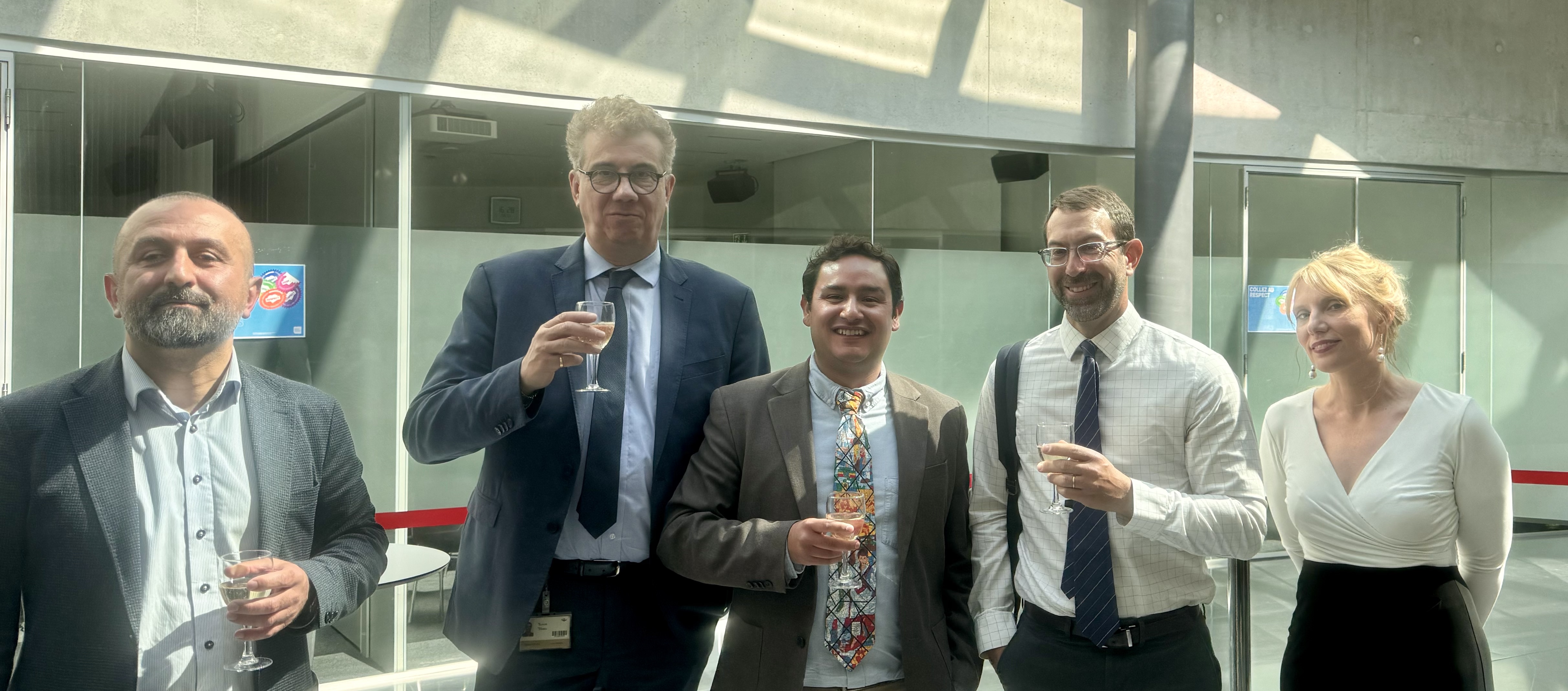How did you come to choose your research project?
Suddenly, in 2020, we all found ourselves stuck in our rooms. It happened – I remember it quite vividly – when I was finishing my MA dissertation here at the Institute in 2019–2020. As I embarked on my doctorate during the difficult years of the COVID-19 pandemic, I thought the time was particularly ripe to think more carefully about “the rooms” of international law. Being stuck in our rooms made me – and many of us if not all, I dare to say – realise how important space was. As we found ourselves prisoners within our own castles, I wondered if the same was perhaps true for international law.
Indeed, as we collectively came to reckon with the importance of architecture and the built environment to our personal wellbeing (not to say our collective survival), I realised that we had not given enough thought to the efforts undertaken in the previous century to create a material home for international organisations – to give international legalism a “room of one’s own”, to paraphrase Virginia Woolf. Before 2020, we could perhaps have taken such buildings for granted. But now, as the world held its breath, and the circuits of global circulation came to a grinding halt, I embarked on the study of the very buildings that claimed to serve as the infrastructures of global governance.
Due to the pandemic, I knew that for the first years of my doctorate it would not be feasible to consult archives beyond Geneva. As such, during those years of endless testing, I began by exploring the materials held by the International Labour Organisation and the League of Nations – retracing, in a way, the process through which the “International Geneva” I had come to know during my studies actually came into being. As the pandemic restrictions loosened, I was able to explore how other cities around the world came to engage with interwar Geneva’s “Great Experiment”, erecting purpose-built structures for new international organisations throughout the world. Eventually, this took me through a winding path that connected interwar Geneva with post–Cold War Rome, passing through New York City and Bogotá in the 1940s, Addis Ababa in the 1960s, and Vienna in the 1970s. This was only possible thanks to the financial support of the Swiss National Science Foundation, which endowed me with a Doc.CH Fellowship to carry out my research project.
Can you describe your thesis questions and methodology?
In a way, my methodological approach was fairly traditional: as an international legal historian, my main sources are the written documents produced by the organisations which commissioned these buildings. Accordingly, I spent the lion’s share of the last four years visiting the official national and supranational collections of international institutions – think, for instance, of the League of Nations or United Nations Archives or the state repositories of the federal Austrian or imperial Ethiopian institutions. There, I found memos, correspondence, and legal documents which allowed me to understand how these buildings were created or contested.
And yet, at the same time, because I was interested in exploring buildings and artworks, my methodological perspective was also quite heterodox and innovative. I consulted not only written sources, but also all sorts of visual materials: from photographs to building plans and even design scrapbooks. I also went beyond the “official archives”, delving into the private collections of leading statespeople, artists, or philanthropists engaged in these sites – think of the archives of the Rockefeller family or of the respected Belgian architect Victor Horta. By contrasting a traditional set of methods (official archives, written sources) with a more heterodox series of materials (visual or private), I was able to paint a more comprehensive picture of the struggles behind the making of these sites.
What is your major argument?
Democracy – or at least the ideal that one can democratise international relations – is central to my argument. As I started to work with my sources, it became clear that the promise that these buildings offered generations of lawyers and international relations experts in the twentieth century was that they could serve as “parliaments of nations”, of sorts. In this way, the model of the domestic European parliament (as a legal technology of governance with a very concrete architectural form) was repurposed for inter-polity relations. This translation took very different forms, but that process of refashioning is the central red thread that connects the ways I was studying throughout the dissertation. Of course, the League of Nation’s Palais des Nations in Geneva is very different from “Africa Hall” in Addis Ababa or the UNO-City in Vienna. But these three sites, amongst many, embody the unfulfilled promise that one can try to construct a more democratic global order through the encounters between international law and architecture. The period I was studying has now long ended – but that promise remains as vital as ever!
* * *

Daniel R. Quiroga-Villamarín defended his PhD thesis in International Law, with a Minor in International History and Politics, on 4 June 2024. He received the highest distinction (summa cum laude avec les félicitations du jury). Professor Fuad Zarbiyev (left) presided over the committee, which included Professor Andrea Bianchi and Associate Professor Carolyn Biltoft (right), Thesis Co-Supervisors, and, as External Reader, Professor Samuel Moyn (second from the right), Department of History, Yale University, USA.
Citation of the PhD thesis:
Quiroga-Villamarín, Daniel R. “‘Architects of the Better World’: Democracy, Law, and the Construction of International Order 1919–1998.” PhD thesis, Graduate Institute of International and Development Studies, Geneva, 2024.
An abstract of the PhD thesis is available on this page of the Geneva Graduate Institute’s repository. As the thesis itself is embargoed until June 2027, please contact Dr Quiroga-Villamarín for access. Hopefully, a book that draws on the dissertation will be available for a broader readership soon.
Banner image: UN Photo/Emmanuel Hungrecker.
Interview by Nathalie Tanner, Research Office.


